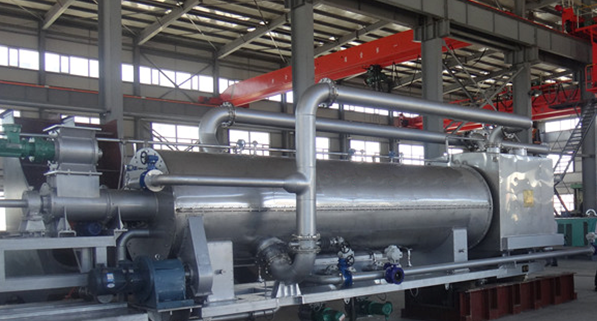The flue gas denitration technology equipment of the biomass power plant is used for removing the process system equipment of the nitrogen oxides in the flue gas after the dust removal and desulfurization of the biomass-fired power plant boiler, including the equipment directly related to the process and the auxiliary equipment attached to the process.
First、Requirements for ammonia-mixing equipment for biomass power plants
1.The design of the ammonia spray mixing device should consider anti-corrosion and thermal expansion, and should consider anti-blocking and anti-wear;
2.The ammonia spray mixing device should have good resistance to thermal deformation and vibration resistance;
3.Diversion and rectification devices can be provided upstream and downstream of the ammonia-spray mixing unit.
Second、Requirements for SCR reactors in biomass power plants
1.SCR reactor should adopt steel structure, steel structure design should meet the requirements of GB50017;
2.The overall structural design of the SCR reactor should fully consider the influence of the flue gas flow rate deviation, the flue gas flow deviation, the flue gas temperature deviation and the NH3/NOX molar ratio deviation of the first catalyst inlet, which should conform to GB/T21509-2008. Provision
3.The design flow rate in the SCR reactor should meet the pressure drop requirement, generally between 5m/s and 10m/s;
4.The SCR reactor should be able to adapt to various operating conditions of the biomass power plant boiler as well as load changes and start-stop requirements;
5.The SCR reactor body can be supported or suspended. When using the support method, the temperature difference stress of the internal structure of the SCR reactor and the horizontal thrust of the load-bearing steel frame caused by the thermal expansion of the bracket should be fully considered;
6.The SCR reactor inlet and outlet shall be provided with a compensator to absorb axial displacement, radial displacement, angular displacement and vibration from itself;
7.The catalyst in the SCR reactor is generally equipped with one or two layers of initial catalyst, and a spare catalyst layer may be reserved;
8.The SCR reactor shall be provided with a manhole door of sufficient size and quantity and with the necessary flue gas sampling port;
9.The SCR reactor shall be provided with the lifting devices and platforms necessary for the installation, maintenance and replacement of the catalyst modules.
Third、Catalyst requirements for biomass power plants
1.The catalyst contained in the SCR reactor can be selected from honeycomb, plate or other forms. The form of the catalyst, the content of each active ingredient in the catalyst, and the amount of the catalyst should be determined according to specific flue gas characteristics, soot characteristics, and ash content;
2.Sealing devices should be designed to effectively prevent smoke short circuit between catalyst modules;
3.The normal operating temperature range of the catalyst in the SCR reactor is generally controlled between 320 ° C and 425 ° C;
4.The configuration of the catalyst layer and the life management mode shall comply with the provisions of GB/T21509-2008;
5.Each layer of catalyst layer shall be provided with a detachable catalyst test element;
6.When the catalyst activity is reduced and the denitration system fails to meet the expected denitration efficiency, the catalyst needs to be installed or replaced.
Forth、Biomass power plant requirements for flue gas heaters
1.Rotary flue gas heat exchanger, tubular heat exchanger or other forms of heat exchanger can be used;
2.The corrosion of ammonium bisulfate should be fully considered. The heat transfer element should be coated with enamel or other anti-corrosion measures;
3.It is advisable to set up a heat exchange component cleaning facility;
4.The leak rate should be less than 1%.
Fifth、Biomass power plant requirements for flue gas heaters
The flue gas heater should be directly heated by a burner or an electric heater.
Sixth、Biomass power plant requirements for reducing agent storage and transportation preparation system
The reducing agent storage and transportation preparation system shall comply with the provisions of GB/T21509—2008.
Luoyang Building Material and Architectural Design and Research Institute analyzed the smoke constituents of China’s gas internal combustion engines and found that the nitrogen oxide emission value can no longer meet the increasingly stringent environmental protection requirements. It is imperative to find a new denitration process route to solve the internal combustion engine emissions problem.After referring to the traditional flue gas denitration method, a flue gas denitration method suitable for gas engine internal combustion distributed energy system-selective catalytic reduction (SCR) was screened out. This method improves the denitration efficiency and solves the problem of nitrogen oxide emissions in the distributed energy system of gas internal combustion engines. The flow field simulation and engineering application prove that the method is more advanced than the traditional method.



